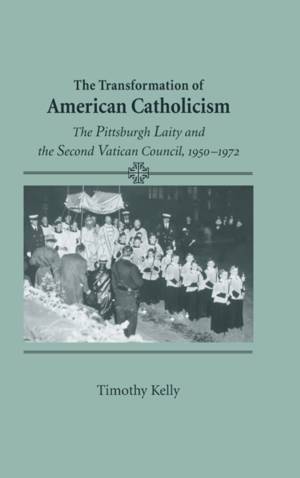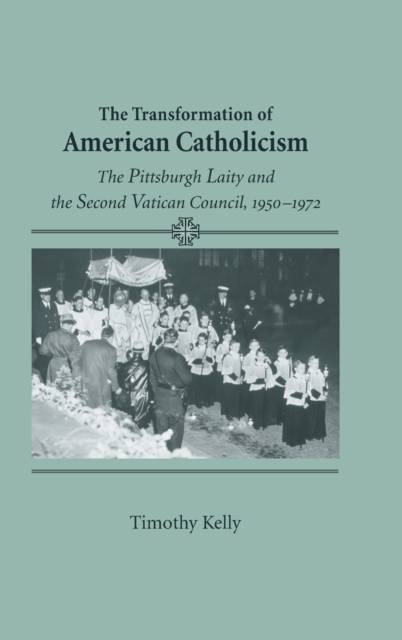
- Retrait gratuit dans votre magasin Club
- 7.000.000 titres dans notre catalogue
- Payer en toute sécurité
- Toujours un magasin près de chez vous
- Retrait gratuit dans votre magasin Club
- 7.000.0000 titres dans notre catalogue
- Payer en toute sécurité
- Toujours un magasin près de chez vous
Transformation of American Catholicism
The Pittsburgh Laity and the Second Vatican Council, 1950-1972
Timothy KellyDescription
Most scholars and media analysts have suggested that Vatican II revolutionized American Catholicism, with the changes it mandated filtering down from the Council to the church hierarchy to the laity.
Timothy Kelly's book challenges this assumption, based on his careful tracing of Catholic lay practices in the Pittsburgh Diocese from the 1950s through the 1970s. The lay experience of American Catholics did change dramatically in the 1960s, but Kelly argues that the transformation began earlier, before the Council, and continued throughout the next decade. Kelly examines the discourse of Catholicism in the 1950s and compares this to actual lay behavior. He discusses critical changes introduced by Vatican II and follows the lay response for a decade after the last Council sessions to illuminate Catholic efforts to implement the changes in everyday practice. His individual chapters focus on devotional behavior, liturgical reforms, and broader social and cultural issues.
Kelly's social history reveals that Vatican II was not a shock to a complaisant and unquestioning laity as much as a reform necessary to keep pace with changing religious, social, and cultural sensibilities. As Catholics rejected a heavily devotional religiosity, they sought instead practices that resonated more with their lived experiences. An emphasis on social justice grew, but lay Catholics had not yet charted a clear path by the end of the Council's last session, and by that time, church officials had begun to resist some of the Vatican II reforms. A fascinating study of the most profound transformation in American Catholicism in the last century, Kelly's work is an important contribution to Catholic history.
Spécifications
Parties prenantes
- Auteur(s) :
- Editeur:
Contenu
- Nombre de pages :
- 378
- Langue:
- Anglais
Caractéristiques
- EAN:
- 9780268033194
- Date de parution :
- 15-01-09
- Format:
- Livre relié
- Format numérique:
- Genaaid
- Dimensions :
- 162 mm x 242 mm
- Poids :
- 698 g

Les avis
Nous publions uniquement les avis qui respectent les conditions requises. Consultez nos conditions pour les avis.






